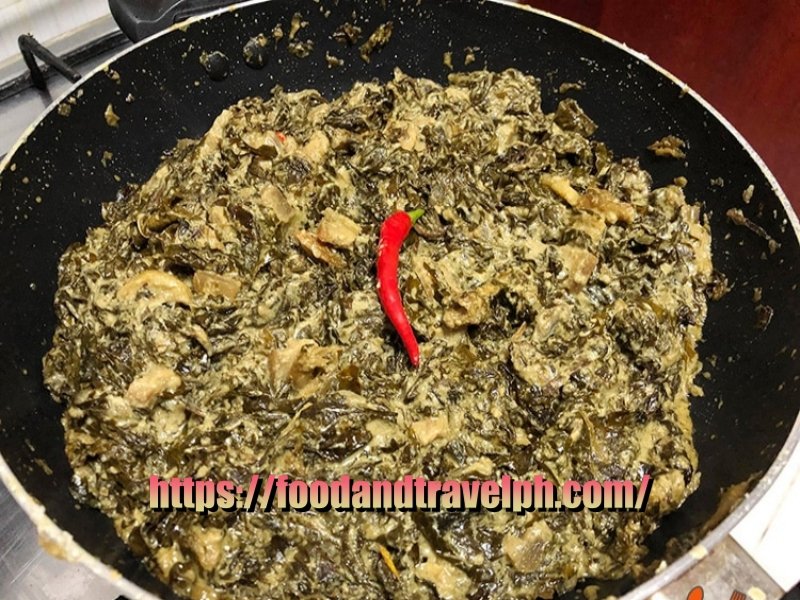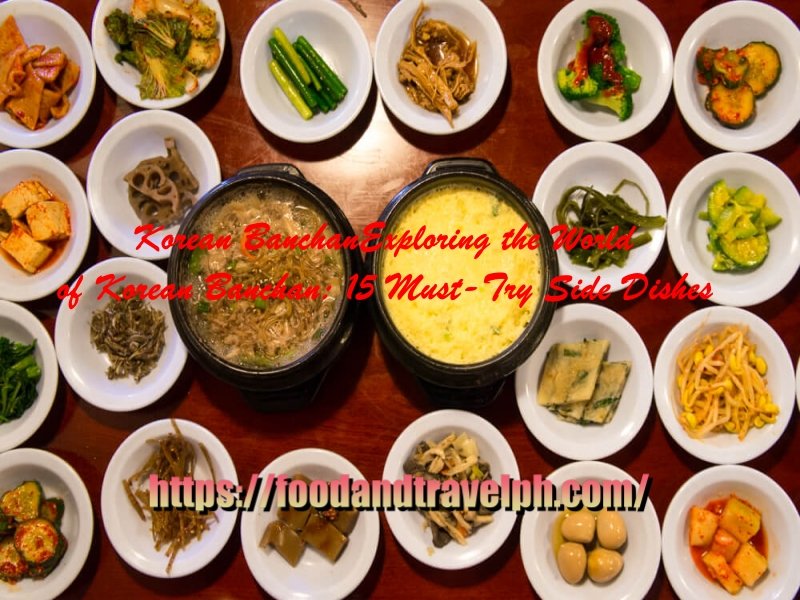Laing (taro leaves) recipe

Laing (taro leaves) recipe is a traditional Filipino dish hailing from the Bicol region, known for its rich, creamy, and slightly spicy flavors. The dish primarily uses dried taro leaves cooked in coconut milk, along with a combination of spices, shrimp paste, and sometimes meat or seafood. Here’s a detailed recipe and cooking instructions for preparing Laing.
Ingredients
- 8-10cups Dried taro leave (tightly packed)
- 4cups cocnut mlik (canned will also do)
- 1cup coconut cream (optional)
- 500grams pork belly (diced) (optional)
- 250grams shrimp (optional)
- 2tablespoons shrimp paste (bagoong)
- 3-5pcs red chili (sliced)
- 1thumb-size piece ginger (sliced)
- 1large size onion (chopped)
- 2tablespoon fish sauce
- Salt and pepper to taste
- 1cup water
Instructions
- Ensure the dried taro leaves are free from any dirt or debris. You can wipe them gently with a damp cloth if necessary. Do not wash the leaves directly with water as they become too soggy.
- In a large pot add a small amount of oil of need. Saute the diced pork belly over medium heat until it starts to turn golden brown. If you use shrimp saute it until it turn into color orange. Remove from the pot and set aside.
- In a large pot add a small amount of oil of need. Saute the garlic, onion and ginger until they become fragrant and the onion turn translicent.
- Pour in the coconut mlik and water then add the shrimp paste, fish sauce and slice red chilies. Stir to comibne.
- Reduce the heat to simmer. Let the coconut mlik cook for about 10 minutes, Allowing the flavors to meld together.
- Gradually add the dried taro leaves into the pot. Press them down gently to submerge them in the coconut milk mixture. Do not stir too much, as this can cause itching from the taro leaves.
- Continue to simmer the mixture over low heat, allowing the taro leaves to soften and absorb the flavors. This can take about 30–45 minutes. Stir occasionally but gently, ensuring the leaves do not stick to the bottom of the pot.
- Add coconut cream (optional) for a richer, creamier texture, You can add the coconut cream during the last 19 minutes cooking stir it in gently.
But if you don’t have coconut milk, immediately follow the next instruction. - Taste the Laing and adjust the seasoning with salt and pepper as needed. If you prefer a spicier dish, you can add more sliced chilies.
- Once the taro leaves are tender and the sauce has thickened, remove the pot from the heat. Let the Laing cool slightly before serving.
Tips
- Be cautions when handling raw taro leaves, as they can cause skin irritation. Always use dried taro leaves or ensure the fresh leaves are prepared (cooked thoroughly) to avoid itching.
- If fresh coconut milk is unavailable, canned coconut milk and cream can be used as subtitutes.
Enjoy your delicious, creamy and savory Laing.

Yukgaejang: The Ultimate Korean Spicy Beef Soup Recipe
How to cook Yukgaejang Yukgaejang is a vibrant and flavorful Korean beef soup known for its rich, sp…
A Guide to Making Delicious Ojingeo-Bokkeum (Spicy stir fried squid)
Ojingeo-Bokkeum (Spicy stir fried squid) Recipe Ojingeo-Bokkeum (Spicy stir fried squid), a fiery an…
Coconut Bliss: The Magic of Adobong Manok sa Gata
Adobong Manok sa Gata Recipe Adobong Manok sa Gata is a Filipino dish that beautifully marries the c…
Savor the Flavors of the Philippines: A Guide to Cooking Chicken Afritada
How to cook Chicken Afritada Chicken Afritada is a popular Filipino dish that features chicken piece…
Deliciously Nutritious: How to Cook Ginisang Munggo
Munggo Recipe Ginisang Munggo is a popular Filipino dish made primarily from mung beans, often enjoy…
Exploring the World of Korean Banchan: 15 Must-Try Side Dishes
How to make Korean Banchan Korean cuisine is renowned for its rich flavors and diverse dishes, and o…










Leave a Reply